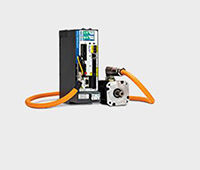Like other wireless networks, wireless sensor networks eliminate the costly labyrinth of dedicated cabling to hardwire devices, enable flexibility in organizing operations, and expand opportunities for keeping tabs on plant-floor conditions and performance.
Selecting the right wireless sensor network for your applications is still a challenge. To help manufacturers make confident decisions, the National Institute of Standards and Technology (NIST) has developed best-practice guidelines for evaluating wireless-sensor-network performance and selecting the option that best meets requirements.

“Our goal is to develop a tool that will enable manufacturers and their technology suppliers to design, assess, select and deploy secure, integrated wireless platforms that perform dependably in factory conditions,” NIST’s Rick Candell said during the International Instrumentation Symposium.
Candell, head of NIST’s Wireless Platforms for Smart Manufacturing project, noted that several standards-based technologies have been adapted or developed to support industrial wireless applications. The guide will include benchmarking tests and metrics for comparing how well different technologies meet specific sets of requirements, he said.
NIST is in the early stages of commissioning a wireless network test bed that will replicate a smart manufacturing environment. It will re-create conditions representative of a variety of industrial settings and support development of network-performance measurements and tests. The test bed also will be used to evaluate the usefulness of NIST network models and simulations.
To ensure that the test bed accurately reproduces the messy and challenging realities of a variety of manufacturing operations—from chemical processing to aerospace—the NIST team is making a special request. They are asking companies to open their plant doors so that the researchers can characterize conditions and factors, such as heat, vibrations, reflections, interference and shielding obstacles that affect network performance.
“We want to re-create the factory and network entirely in the lab,” Candell said. “To do that, we need to make measurements in the field to capture channel and environmental characteristics and to represent the current state of wireless activity in different types of manufacturing operations. We want to assess how the network performs and how the wireless network impacts factory performance.”
The NIST team has just completed gathering needed data at NIST’s own machine shop and at a U.S. automaker’s transmission assembly plant.
“We would like to expand our measurement efforts from discrete manufacturing to a broader range of industries, including the process control industries such as oil and gas, chemical, and water treatment,” Candell said.
NIST
www.nist.gov/el/isd/cs/wpsm.cfm
Filed Under: Wireless devices, MOTION CONTROL





Tell Us What You Think!